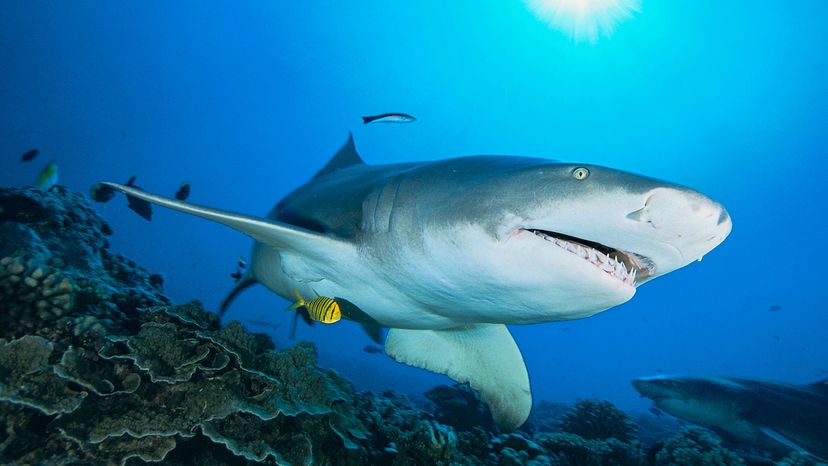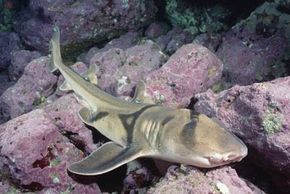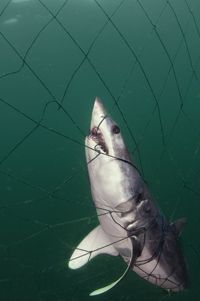
Sharks take "doing the wave" to a whole new level. They swim by waving their body in side-to-side curves. It starts with the head turning first one way, then another. The movement ripples down their torpedo-shaped body, pushing the water away and providing forward propulsion. Last comes the tail, the fins shaped to allow them to move quickly and achieve immense liftoff or propulsive downward thrust. Obviously a shark has to swim to catch its prey, meet its mates and avoid its predators, but does a shark have to swim just to stay alive?
Advertisement
You may have heard that a shark will drown if it stops moving, an idea that has been cited everywhere from biology textbooks to "Ripley's Believe It or Not!" [source: Bennetta]. This theory came about by comparing sharks to bony fish, which have many more muscles around the breathing apparatuses, the gills.
To understand why this distinction is important, let's take a look at how sharks and other fish breathe. To breathe, sharks must remove oxygen from the water around them. The water enters the shark's mouth (the shark's nose is used exclusively for smell) and flows over the gills. Inside the gills are hundreds of feathery gill filaments. Each filament in turn has thousands of leaflike lamellae, or flaps, which contain blood vessels. The blood absorbs the oxygen from the incoming water, and the excess water flows back out the shark's body through gill slits. Sharks have five to seven pairs of gill slits, depending on the species.
With this method, sharks can extract about 80 percent of oxygen out of the meager 1 percent of oxygen that's present in the water; to compare, humans have 21 percent of oxygen available in the air, but take in only about 25 percent [source: Parker]. To maintain a steady flow, though, the shark constantly needs to be taking in water.
But does it have to constantly swim to take in this water? Scientists thought so because other fish seemed to have the equipment to actively pump the water through their mouth and over their gill slits, whereas sharks looked less developed. But how to account for sharks that don't seem to swim at all, like the angel sharks and nurse sharks we might see at aquariums? It turns out that not all sharks have to stay moving to breathe.
Advertisement

